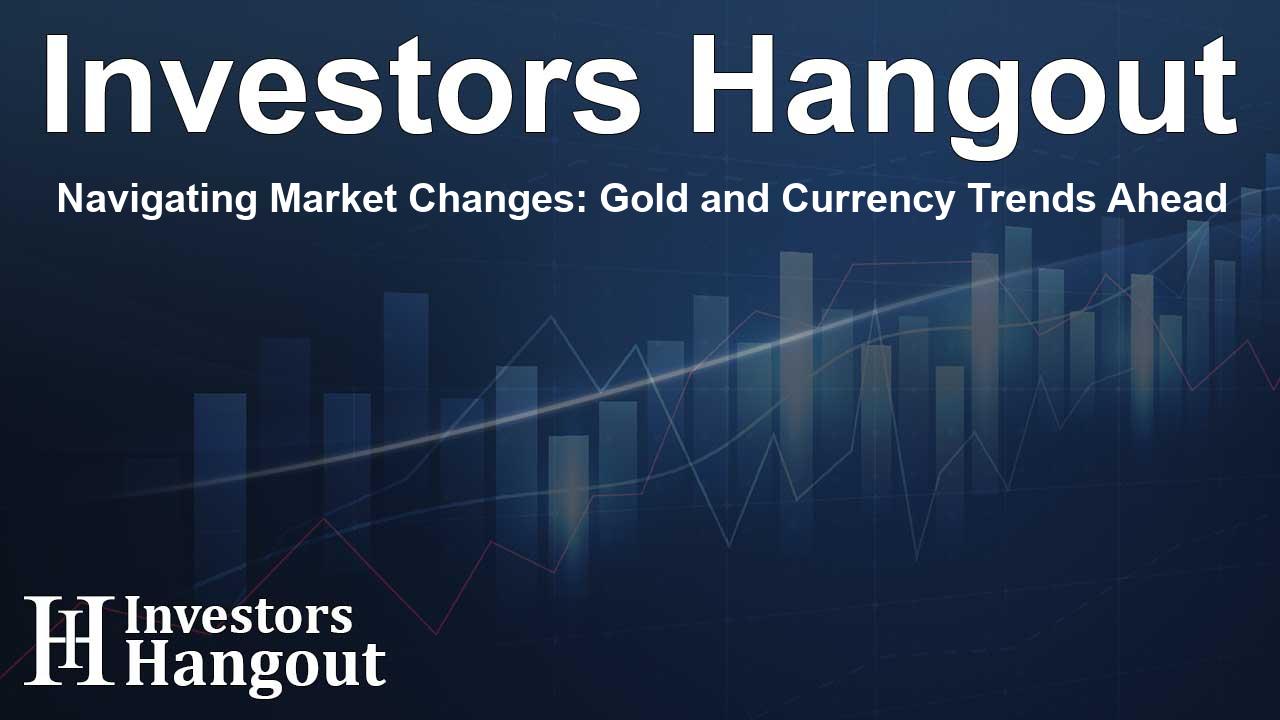Navigating Market Changes: Gold and Currency Trends Ahead

Gold Rises on Persistent Safe-Haven Demand
Gold prices rose by 1.07% for the second consecutive trading session. As the US dollar weakens, gold has been gaining traction, driven by a combination of fiscal concerns and ongoing trade uncertainties that weigh heavily on the dollar.
Recent events, such as fiscal measures projected to significantly increase national debt, have raised alarms about long-term financial stability, driving investors towards commodities like gold which are traditionally considered safe havens. Alongside this, the instability stemming from trade negotiations with Japan, where tariffs were threatened, has added an extra layer of uncertainty, curbing more significant declines in gold prices.
Market participants are keenly observing the Federal Reserve's monetary policy direction, which is expected to have a profound impact on gold's future trajectory. Fed Chair Jerome Powell has hinted at a cautious approach to interest rate adjustments but hasn’t dismissed the idea of cuts in the near term. The current stance from the US Treasury Secretary suggests a likelihood of rate cuts by this fall. These factors combined with persistent fiscal and trade concerns offer a solid backdrop for gold prices, despite temporary relief from easing geopolitical tensions.
In the trading sessions, gold prices maintained stability, particularly following positive news regarding a cease-fire agreement in a conflict region, which, although good for regional stability, triggered some profit-taking among traders currently invested in gold.
Euro Strengthens Following Dovish Fed Signals
The euro gained 0.16% against the US dollar, reaching a remarkable position against the dollar not seen since 2021. The European Central Bank's recent discussions reflect a cautious approach towards interest rates, indicating that any forthcoming rate cuts from the Fed could enhance the euro's strength.
This week, attention was drawn to concerns regarding the Fed's independence, fueled by political pressures, notably from the President's public comments about expected interest rates. The evolving dynamics could exert downward pressure on the dollar while sustaining the euro’s positive performance.
As the market steadies, the upcoming talk by the ECB President will likely reveal insights regarding potential monetary policy shifts, which could steer market expectations ahead of economic reports making their debut. Traders are also eyeing employment figures that might further inform the euro's movement against the dollar.
Weakening US Dollar Supports Australian Dollar
The Australian dollar recently hit 0.65900 amidst weaker domestic data reflecting stagnant consumer demand. Reports showing a 0.2% increase in retail sales, while better than April's performance, fell short of expectations, highlighting a need for economic improvement.
Market expectations of the Reserve Bank of Australia (RBA) cutting interest rates to support economic momentum are on the rise after recent metrics fell below anticipated thresholds. As the market forecasts suggest a downward adjustment in rates, this might be favorable for capably sustaining economic activity moving forward.
Nevertheless, the Australian dollar has been buoyed by the US dollar’s downturn, which is faltering at historically low levels due to anticipated Fed rate cuts and broader uncertainties linked to governmental financial strategies. Despite soft data points, the Aussie dollar has retained its strength, prompting interest in the imminent ADP employment report.
Traders will be paying close attention to these economic indicators, which could influence the trading dynamics of the Australian dollar significantly in the coming days.
Considerations for Investors
Investors should maintain awareness of the interconnected nature of these market trends. Currency fluctuations can impact not only commodity investments like gold but also broader economic conditions. As geopolitical events unfold and economic data is released, staying informed can provide strategic advantages in navigating the complexities of these shifting markets.
Frequently Asked Questions
What factors are contributing to the rise in gold prices?
The rise in gold prices is primarily due to a weakened US dollar, ongoing fiscal concerns, and uncertainties in trade negotiations.
How does the Fed's monetary policy impact gold?
The Federal Reserve's interest rate decisions directly affect gold prices, as lower rates tend to enhance gold's appeal as an investment.
Why is the euro strengthening against the dollar?
The euro is strengthening due to a dovish stance from the Fed and increasing concerns about the dollar’s outlook, influencing investor sentiment.
What is the significance of economic reports on currency trading?
Economic reports provide vital data that can influence currency valuation, affecting trader expectations and market psychology.
How does a weakening US dollar affect the Australian dollar?
A weakening US dollar can support the Australian dollar by making its commodities more attractive and boosting investor confidence in Australia's economic outlook.
About The Author
Contact Owen Jenkins privately here. Or send an email with ATTN: Owen Jenkins as the subject to contact@investorshangout.com.
About Investors Hangout
Investors Hangout is a leading online stock forum for financial discussion and learning, offering a wide range of free tools and resources. It draws in traders of all levels, who exchange market knowledge, investigate trading tactics, and keep an eye on industry developments in real time. Featuring financial articles, stock message boards, quotes, charts, company profiles, and live news updates. Through cooperative learning and a wealth of informational resources, it helps users from novices creating their first portfolios to experts honing their techniques. Join Investors Hangout today: https://investorshangout.com/
The content of this article is based on factual, publicly available information and does not represent legal, financial, or investment advice. Investors Hangout does not offer financial advice, and the author is not a licensed financial advisor. Consult a qualified advisor before making any financial or investment decisions based on this article. This article should not be considered advice to purchase, sell, or hold any securities or other investments. If any of the material provided here is inaccurate, please contact us for corrections.
